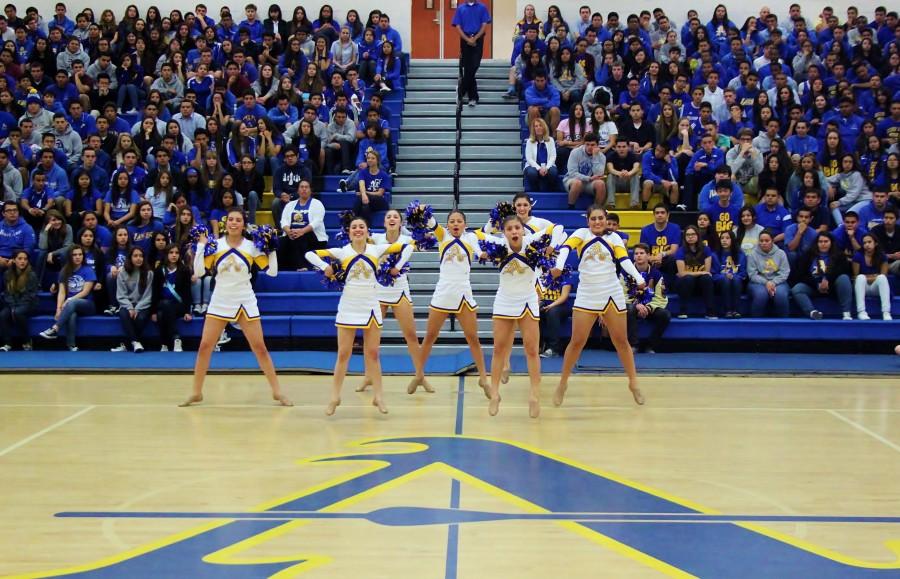Written by Teresa Ning / Staff Writer
During the season, sophomore Alyssa Pena suffered a sprained wrist a couple of times and even fractured it a few others.
So what dangerous sport was she playing? Softball? Basketball? Nope. She’s a cheerleader.
In recent years, a large debate has emerged, regarding whether or not cheerleading should be considered a sport for Title IX purposes. According to the Title Nine website, “Title IX a section of legislation included in the Education Amendments 1972 which mandates schools that receive federal funds to provide girls and women with equal opportunity to compete in sports”.
There are supporters who consider cheerleading a sport, referencing to the heavy use of athletic talents, but there are critics who consider the activity as a performing art.
“I would assume it’s because they don’t understand the nature of the activity,” Ms. Elizabeth Deines, the head coach for the Bishop Amat pep squad said. “Most people aren’t familiar with the intense training and dedication cheerleading demands of it’s athletes.”
Ms. Deines has coached and advised dance and cheer teams for over ten years. Her teams have won high-profiled national competitions at the high school and collegiate level.
Cheerleading is featured in every high school in the United States and internationally like in countries such as Australia, China, Colombia, Finland, Japan, the Netherlands and the United Kingdom.
However, according to the National Collegiate Athletic Association (NCAA) it’s not officially a sport.
“I believe cheerleading at school is a performing art and not a sport but competitive cheer is,” sophomore Justin Castell said.
Although cheerleading began as an all-male sport, cheerleading in high school mostly dominated by girls. Cheerleading consists of learning chants, and cheering at various sports games and school spirited related activities. This so-called sport is meant to boost school spirit into the student body.
“You are also expected to be a positive representative and spokesperson for the school,” Ms. Deines said.
The purpose of a cheer team is to keep the crowd excited at sporting events, and motivate school spirit.
“Simply being a high school cheerleader is definitely a selfless act,” Deines said. “It’s all about showing pride and support for your school and leading the crowd in cheering at events and games.”
This high-contact sport inflicts all types of injuries. According to the 26th Annual Report from the National Center for Catastrophic Sports Injury Research at the University of North Carolina at Chapel Hill written by Frederick O. Mueller, any severe injury that occurs during participation in a school or college sport is considered catastrophic and divided into three categories – fatal, non-fatal and serious.
“This sport is very dangerous due to various stunt sequences and tumbling,” sophomore Alyssa Mireles said. “Bases and spotters can accidentally drop a cheerleader and we’re twisting, bending and exerting our bodies to the extreme.”
Along with the dangers of severe to fatal injuries, cheerleaders practice just as much as other sports teams do.
“Teams will work up to 10 hours a week on their competition routines to make sure their formations, stunts, jumps, routines, voice projection, etc. are the best they can be,” Ms. Deines said.
Cheerleaders are very dedicated and very busy with school spirited related activities at school.
“Competitive cheer is extremely time consuming and requires a lot of skill and dedication,” said Mireles.
Deines agreed.
“They work extremely hard and dedicate so much time to their practices to ensure they look polished and prepared at events,” Deines said. “Along with that, they also put in many hours per week making posters, cards or treats for other groups, teams and organizations on campus as well as attending about one to three events/games per week to show their support to their fellow Amat students.”


